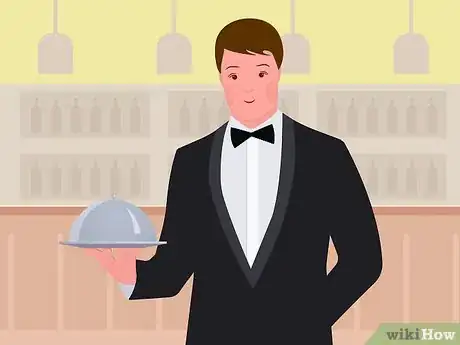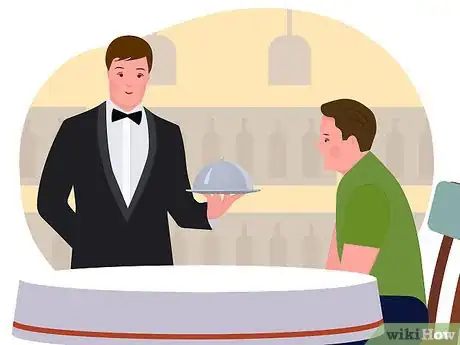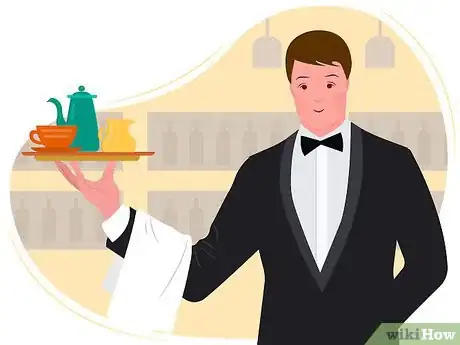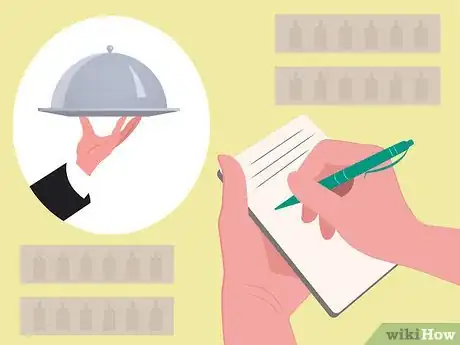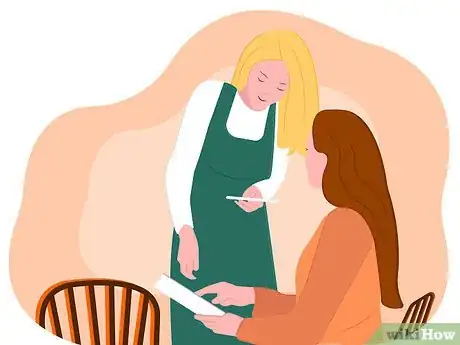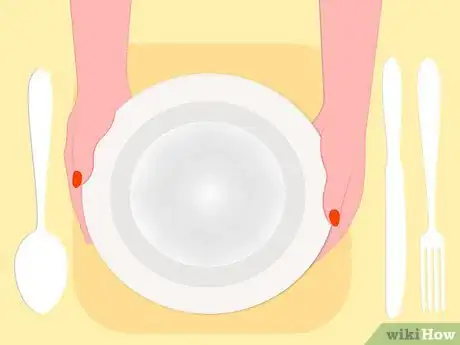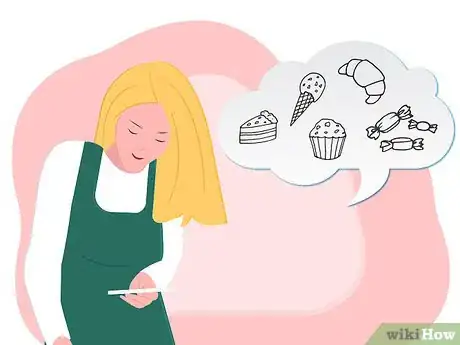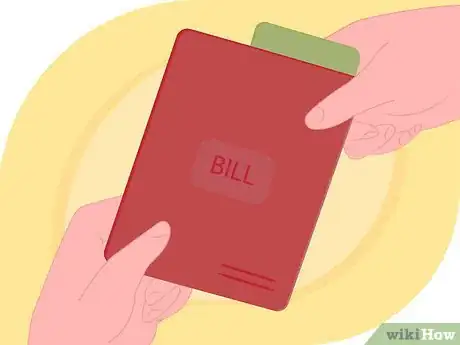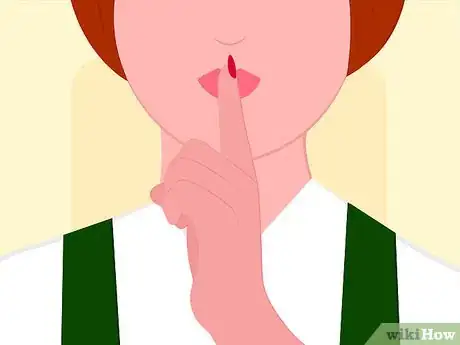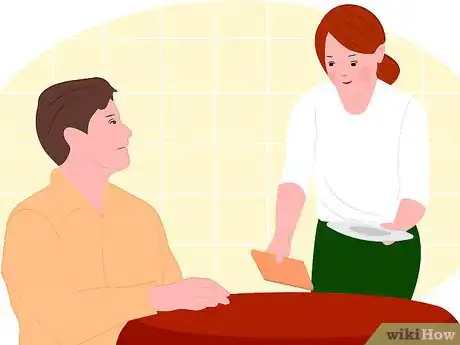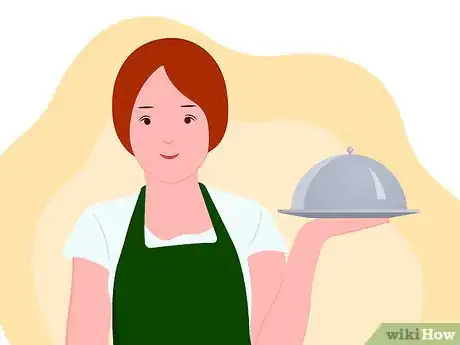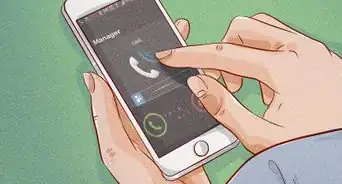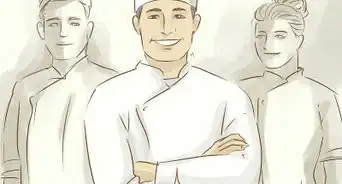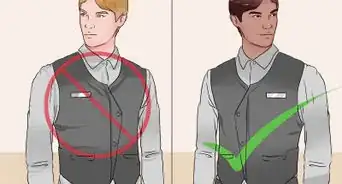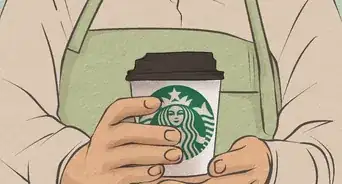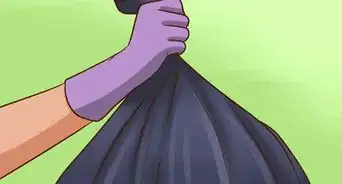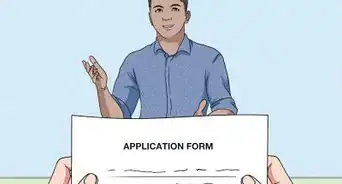wikiHow is a “wiki,” similar to Wikipedia, which means that many of our articles are co-written by multiple authors. To create this article, 78 people, some anonymous, worked to edit and improve it over time.
There are 7 references cited in this article, which can be found at the bottom of the page.
wikiHow marks an article as reader-approved once it receives enough positive feedback. In this case, 94% of readers who voted found the article helpful, earning it our reader-approved status.
This article has been viewed 698,446 times.
Learn more...
From Kelsey Grammar to Kelly Clarkson, many people got their career started off by waiting tables. Working in a restaurant environment is fast paced and lucrative work if you approach it correctly and develop the right skills. If you're personable, reliable, and a good multi-tasker, serving food in a restaurant can be a great short- or long-term opportunity. Follow our general advice below or find more specific help by checking out the sections listed below.
Things You Should Know
- Practice skills that are crucial in the role, like communication, quick thinking, and upper body strength.
- To find yourself a job, search for locations that will train you, connect with the hiring manager, and do interview prep beforehand.
- Earn tips by coming in well dressed, learning to read your customers, and being on the lookout for signals from your guests.
Steps
Learning the Skills
-
1Be charming. People come out to eat at a restaurant for more than the food. Eating out is an experience, and the wait staff is the most visible part of that experience. Can you chat up even the most dour and uncommunicative people at parties? Do you empathize with people easily? Are you quick with a joke and smile? If the answer is yes, you've got one of the necessary traits at waiting tables.[1]
- You don't have to be a stand-up comedian, but you do need to be a good communicator. Quiet servers are often just as good as talkative ones, they just need to make sure they're communicating with body language, doing their job efficiently, and listening as well as they possibly can.
-
2Be quick. Are you a good multitasker? Can you remember lists of things easily? Can you adapt quickly to changes and new situations? A member of the wait staff needs to be able to take orders, communicate with the back-of-house workers, and act as the "face" of the restaurant to the customers. It's a tall order, but it must be done quickly and efficiently for the restaurant to work properly.[2]Advertisement
-
3Be strong. Carrying a tray of wobbly drinks and hot plates full of buffalo wings is difficult enough to do without spilling once, but after a long shift of serving rowdy football fans? It can be downright exhausting. If you're fit and healthy, being a member of the wait staff will be a much more comfortable transition. You don't have to be a bodybuilder, but it helps to be comfortable negotiating a crowded room while holding heavy objects safely and quickly.
-
4Write clearly and use computers well. If the kitchen can't read your tickets, things will get messed up quickly. Keeping track of information and legibly recording your orders is a critical part of the process of the restaurant. The whole process starts with you.
- At the restaurant, you'll get specific details and learn how the system works, but in general you want to be familiar with the essentials.
Getting a Serving Job
-
1Apply at restaurants that will train you. The upscale bistro downtown probably doesn't hire servers without experience. If you've never worked as a server before, chain restaurants like Chili's or Applebee's are a good way to start out, getting the training and experience you'll need to get a job where the tips will be great. You'll learn a lot about the way a restaurant works and the way to be a good server.
-
2Get a resume together. If you don't have one already, focus on articulating the skills necessary for serving food in a restaurant. You'll need to be good at dealing with customers, working in a team-environment, and working quickly. Highlight similar work experience that illustrates these traits.[3]
- If you've never worked before and hope to get a job as a server, you might focus on school successes and teamwork environments like sports in which you've thrived. Be positive and sell yourself. That's the job.
-
3Talk to the manager. When you find a place that's hiring, ask to speak with the manager. A resume left with a bartender might end up getting lost, and anyway, the bartender isn't the one doing the hiring.[4]
- Bring your resume and your enthusiasm. Tell them you'd be really excited to speak more about the position and that you're ready to start right away. Since being a server is about making a good first impression most of the time, treat getting the job like the job. Make a good first impression.
-
4Anticipate the interview questions. Preparing answers to likely interview questions will ensure that you're not thrown for a loop in front of the manager and that you've thought through the responsibilities of the job.[5]
- Some managers might ask, "What's your favorite thing on our menu?" or "If the kitchen ran out of fish, what would suggest as an alternative?" Brush up on the menu of the restaurant before hand by checking out Yelp or the restaurant's website.
- Be prepared to respond to disaster scenarios. Some managers might ask, "Someone gives you a fake ID to buy alcohol. What do you do?" or, more directly, "A customer is angry about their meal. What should you do?" Think through these scenarios and respond thoughtfully.
- Come with questions of your own. Usually, a good question like "What does someone need to be really successful here?" can leave an extremely good first impression on a manager. They'll often give you the chance to ask questions, which can be a missed opportunity in an interview.
Waiting Tables
-
1Approach your table with a smile and a greeting. Introduce yourself and say your name clearly. "Hello, nice to see you. My name's ___. Here is/are your menu(s). Would you like to start off with a refreshing beverage from our bar?" Greet customers with a smile as they enter.[6]
- Maintain balanced eye-contact, but avoid staring too much. Some customers are uncomfortable and will come to the restaurant in a variety of moods. Respond appropriately. As you seat them at their table, perhaps stir up small conversation as you proceed to take their drink orders. If they're not interested in chatting, leave it at that.
-
2Take drink orders clockwise starting at your left. If children are present, ask for their beverages first, followed by ladies and then gentleman all following the left to right order.
- This is also the time to discuss the specials and any promotional deals the restaurant is offering at this time.
- When you have served their drinks, ask if they have any questions about the menu. Don't rush them unless they are late, and even then do it gently. If they are ready to order, take their order clockwise starting at the left and closest to you. If not, proceed to your next table.
-
3When the main course is served, always ask, "May I get you anything else?" and give them a second to think about it. Check back again within five minutes with, "Are you enjoying everything?" Ask specifically about the host's dish: "How is your Steak?" Listen to their response and read their body language: many people are shy to speak up about problems, and they may blame that on you when it comes time to leave a tip.[7]
- Bring out orders in their entirety. Never bring one guest's food without the other's, unless specially instructed otherwise (this may happen if one or more in the party plans to leave early). Normally, there shouldn't be any circumstance causing one part of an order be ready much later than another. If on occasion you foresee this happening and causing a problem, briefly explain the situation and ask how the customer would prefer handling this.
-
4Clear any of the plates from the current course as soon as it is obvious the customer wants them to be removed. Always clear plates from the previous course completely before bringing plates from the next course to a table.[8]
- Before clearing plates, be sure to ask politely if they are ready. Use a manner and tone consistent with both the atmosphere and the customer. Generally, "May I take this/these for you?" is good. Don't ask if they're obviously still eating. If someone is talking and has food on their plate, don't interrupt their story to ask if they're finished. Wait and come back.
-
5When the main course is cleared, ask, "Would you like to see the dessert menu?" Asking gives them the chance to order more without having to make a special request for it. They'll be more likely to order dessert if you ask.
- Clear any complimentary breads and/or soup from before the main course before ordering the dessert course.
-
6Take their payment. Inform your guest that you will prepare the payment for them, making change if they've paid in cash and processing the credit card if they're using one. Never ask if they want change or assume that the change is for your tip--just break the bills and quickly return with the change/receipt.
- When you return, thank them and say something like, "It's been nice to see you" , "Hope to see you again soon", OR if they seem to be lingering after their meal, just say "thank you", as they may need refills and such.
Making Good Tips
-
1Make sure you are presentable before you leave for work. Always arrive at least 15 minutes before your scheduled shift, well-groomed and with clean clothes on. Wear clean shoes and socks. Your hair should be neat and washed, your nails clean, your uniform/clothes clean and modest. Apply limited quantities of makeup to show a natural & fresh look.[9]
-
2Watch for signals. If a table wants something they will glance around to look for you. Learn to stay alert as you walk the floor, without staring at your tables. Most customers will make eye contact as a signal that they need you. This can give them the feeling like you're paying attention without hovering over them.
- When their good food and conversation is over, they will start looking around at other diners or the walls. This can tell you when to clear plates, offer desserts or drop the check.
-
3Talk less. Avoid going into eagle-hawk mode and badgering the customers. Customers hate to be ogled at or constantly interrupted in their conversation and meal, but will also need something every now and then. It's a delicate balance.
- Learn to gauge your customers quickly. If a couple seems tense and like they might be in the middle of an argument, it's probably not the time to ask "Celebrating something tonight?" or other breaking-the-ice questions. If a table seems like they're having a good time and are hesitant to leave, suggest drinks or coffee. If they feel like chatting, take a moment to chat. If not, leave them in their conversation.
-
4Don't assume the man will pay. If it becomes directly known to you during their visit which guest will be paying, you may leave the check at the end of the table by him or her. Otherwise, leave the check in the middle of the table. Check is always face down. If it is inside a check envelope, lay it flat on the table.
-
5Stay calm. When customers get nasty or rude, listen and communicate with them openly. Remember: it's a job, it isn't personal. If they're openly belligerent, disturbing other customers, or overtly drunk, grab the manager and let the boss deal with it.
Community Q&A
-
QuestionIf a customer leaves a tip in my hand, is it for the restaurant or me?
 Community AnswerMost of the time, it's for you. Though, if you're not sure, ask the manager politely and he or she will help you.
Community AnswerMost of the time, it's for you. Though, if you're not sure, ask the manager politely and he or she will help you. -
QuestionFrom which side do I serve the guests, and from which side do I clear the dishes? Where do I place wine in front of the guest?
 Community AnswerDrinks should always be on the right side of the guest, bread plates on the left. Use the path of least resistance for clearing and serving.
Community AnswerDrinks should always be on the right side of the guest, bread plates on the left. Use the path of least resistance for clearing and serving. -
QuestionHow do I deal with questions I don't know how to answer?
 Community AnswerNever give the customer your best guess, because you may be wrong. Be honest with them and tell them you're unsure, then make every attempt to find a more experienced coworker or a manager (preferably a manager) and ask them. Take the answer back to the customer yourself, do not ask your coworker or a manager to do so for you.
Community AnswerNever give the customer your best guess, because you may be wrong. Be honest with them and tell them you're unsure, then make every attempt to find a more experienced coworker or a manager (preferably a manager) and ask them. Take the answer back to the customer yourself, do not ask your coworker or a manager to do so for you.
Warnings
- Don't let one mistake trip you up the whole night. If you let one bad thing get to you, you'll slip up more and more. Just shake it off, take a breather, and move on. Talk to someone you like or respect and get it off your chest - "I screwed up! I'm sorry" lightens the burden as does the honest reply "You should have been here when I was doing your job!"⧼thumbs_response⧽
Things You'll Need
- Pens that work, scratch paper, a table crumber, a lighter (if smoking is allowed in the restaurant), and a waiter's friend (bottle/wine opener).
- Comfortable, good quality shoes with a good non-slip grip (kitchens can be slippery).
- If you have long hair make sure to bring extra hair-ties just in case you or a co-worker needs it.
References
- ↑ https://upserve.com/restaurant-insider/5-serving-tips-waiters/
- ↑ https://www.ezeeburrp.com/blog/top-qualities-of-a-great-restaurant-waiter/
- ↑ https://careertrend.com/how-8350251-waiter-experience.html
- ↑ https://careertrend.com/how-8350251-waiter-experience.html
- ↑ http://howtobeagoodserver.com/how-to-get-a-serving-job/
- ↑ https://ptmoney.com/how-to-be-a-good-waitress/
- ↑ https://www.forbes.com/sites/larrymagid/2012/09/03/10-rules-for-restaurants/#6822e4b06854
- ↑ https://www.forbes.com/sites/larrymagid/2012/09/03/10-rules-for-restaurants/#6822e4b06854
- ↑ https://www.thepennyhoarder.com/make-money/side-gigs/how-to-get-more-tips/
About This Article
To be a waiter, work on your communication skills since a big part of being a good waiter is being friendly, talkative, and a good listener. You should also practice multitasking so you're ready to take orders, communicate with the kitchen staff, and act as the face of the restaurant, all within a fast-paced environment. Also, make sure you're able to carry large, heavy objects with one or two hands since you'll be required to carry trays of wobbly drinks and hot food around a crowded restaurant. To learn how to find and apply to serving jobs, scroll down!
